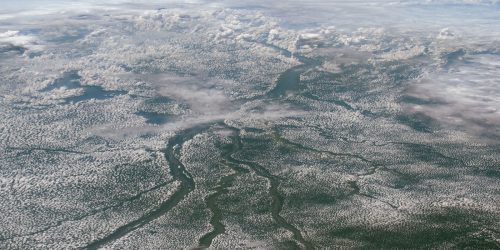Parts of the Antarctic ice sheet are vulnerable to rapid melting because of warming global temperatures. This melt has the potential to produce global sea level rise and widespread economic and ecologic impacts in coastal areas. A new study, supported by the Climate Program Office’s Earth’s Radiation Budget (ERB) Program, uses computer modeling to explore how solar geoengineering could slow Antarctic ice melt in the upcoming decades and centuries. ERB-funded scientists Ben Kravitz of Indiana University and Douglas MacMartin of Cornell University worked with a team of researchers to simulate deliberate cooling by injecting reflective particles into the atmosphere to deflect sunlight before it reaches Earth’s surface. This project works toward an ERB initiative to improve the representation of this method, called stratospheric aerosol injection (SAI), in climate models.
The researchers modeled eleven different SAI strategies that varied by the injection location and the amount of aerosol injected. The results, published in JGR Atmospheres, show that SAI has the best chance to slow Antarctic ice loss when the injection is primarily concentrated in the southern hemisphere. The simulation with a single injection in the northern hemisphere actually increased Antarctic melt in the model, through warming in the surrounding Southern Ocean waters. At the very least, the experiment shows that SAI strategies using injection at multiple latitudes may be able to mitigate the ice melt to some extent. This study provides an example of how variations in SAI implementation can lead to very different regional impacts. The authors emphasize that decision-makers must consider a complex array of factors if the SAI method is put into practice for climate change mitigation. This ERB project will continue to assess and compare potential methods of solar climate intervention using the Community Earth System Model, version 2.
For more information, contact Clara Deck.
Image credit: Pixabay










